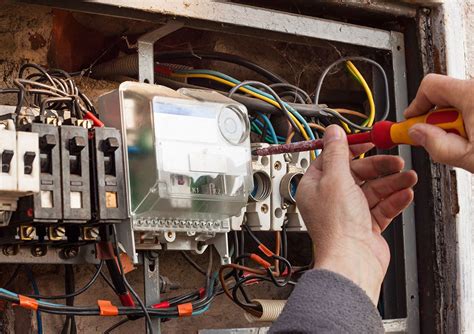Dedicated technical support for electrical industry needs.
Dedicated technical support for electrical industry needs.
Blog Article
Top Tips for Effective Electric System Troubleshooting
Repairing electrical systems needs a methodical strategy, grounded in a thorough understanding of electrical concepts and safety methods. By familiarizing oneself with circuit parts, utilizing essential tools, and sticking to a structured assessment method, professionals can properly recognize and settle problems. The nuances of efficient repairing extend beyond simple technical expertise; understanding exactly how to record searchings for and prioritize safety can significantly affect end results. As we explore these vital components better, it becomes clear that understanding this process is not just beneficial however crucial for success in the area.
Understand the Basics
Understanding the basics of electric systems is essential for reliable troubleshooting, as a strong foundation allows specialists to diagnose and resolve issues more successfully. A comprehensive grasp of electrical concepts, such as voltage, present, resistance, and power, is important in determining the source of problems. Voltage is the electric prospective difference that drives existing via a circuit, while resistance opposes the flow of current, influencing the total capability of the system.
Familiarity with circuit parts, including resistors, capacitors, diodes, and switches over, is likewise critical. Each part plays a distinct duty in circuit habits and can influence performance when malfunctioning. In addition, comprehending collection and parallel circuit configurations is crucial, as these arrangements influence the circulation of voltage and current within the system.
Technicians have to be aware of potential risks, such as shock and short circuits, to carry out secure troubleshooting techniques. By grasping these fundamental ideas, professionals boost their capacity to perform reliable diagnostics and fixings, inevitably leading to boosted efficiency and reliability of electrical systems (electrical system troubleshooting).
Gather Necessary Equipment
Efficient troubleshooting of electrical systems calls for the ideal collection of devices to identify and fix issues properly. Necessary tools include a multimeter, which measures voltage, existing, and resistance, allowing for specific analyses of electric parts.
Additionally, protected hand devices such as screwdrivers, pliers, and cable strippers are critical for securely adjusting electric links. It is also a good idea to have a circuit tester on hand to validate the presence of voltage in electrical outlets and wires. For even more complex systems, a thermal imaging electronic camera can assist detect overheating elements, indicating prospective failings.

Follow a Methodical Technique
Having actually collected the proper devices, the following action in repairing electric systems is to adhere to an organized strategy. A systematic strategy makes certain that specialists can identify faults efficiently and accurately, minimizing downtime and preventing unnecessary repairs.
Begin by examining the system's schematic representations and specifications. This involves monitoring each part systematically, starting from the power resource and working in the direction of the tons.
Utilize screening tools, such as multimeters and oscilloscopes, to gather objective information regarding voltage, existing, and resistance at different points within the system. This empirical proof will certainly direct your troubleshooting initiatives and assist to confirm or click now remove prospective root causes of failing.
Furthermore, consider ecological elements that might influence the system's efficiency, such as temperature variations or moisture access. A detailed inspection of electrical wiring, connections, and elements will make sure that all possibilities are made up.
File Your Searchings For
Complete documentation is necessary in the troubleshooting procedure of electric systems. Precise documents enhance the effectiveness of identifying repeating concerns and help with interaction among staff member. Each finding needs to be meticulously noted, consisting of symptoms observed, examinations conducted, and the outcomes of those examinations. electrical system troubleshooting. This technique not only aids in comprehending the origin of the issue yet additionally works as a recommendation for future repairing initiatives.

In addition, keeping a log of parts changed or repairs performed is invaluable. This information sustains stock management and can aid analyze the long life and dependability of particular components.
Inevitably, the paperwork process need to be complete yet concise, enabling very click to read more easy retrieval and testimonial - electrical system troubleshooting. By focusing on detailed documents, service technicians can create a beneficial data base that not only help in current troubleshooting yet likewise encourages future maintenance initiatives, consequently improving total system reliability

Prioritize Safety And Security Procedures
Recognizing the integral risks linked with electrical systems is vital for ensuring security throughout troubleshooting. Electric shock, burns, and devices damages are simply a few of the possible threats that professionals face. Focusing on precaution is not only a legal responsibility yet also a moral imperative that safeguards both the professional and the surrounding environment.
Before beginning any kind of troubleshooting job, technicians ought to put on ideal individual safety equipment (PPE), including protected handwear covers, safety and security glasses, and flame-resistant clothing. Guaranteeing that the workplace is completely dry and devoid useful content of mess can considerably minimize the risk of accidents. Moreover, it is important to de-energize circuits prior to beginning any type of job, confirming that they are not endure using a multimeter or voltage tester.
Establishing clear communication protocols with employee is also important; this guarantees that everyone knows potential hazards and the status of the electric system being serviced. Having an emergency situation reaction plan in location can verify vital in the event of an incident. By focusing on precaution, service technicians can efficiently mitigate threats and cultivate a much safer workplace.
Verdict
Effective electric system troubleshooting depends on a comprehensive understanding of fundamental principles and a methodical method. Focusing on safety procedures ensures the wellness of people involved and the integrity of the electrical system.
Report this page